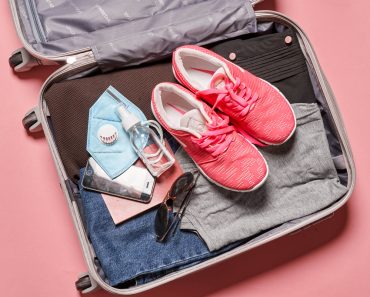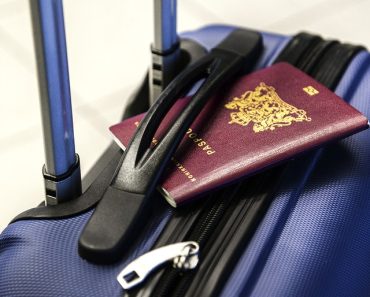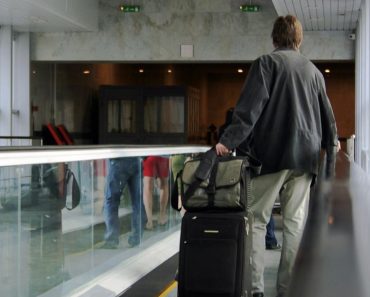There are many choices, sizes, and materials to consider when purchasing a luggage set; here are the most important factors to think about.

Your Traveling Style and Plans
Do you go alone, as a couple, or in a family? Do you go frequently or seldom? Are you flying to your destination, driving there, or taking a cruise? Do you do short or extended trips?
Consider the ways in which you’ll use your luggage to help you decide. We frequently travel in a variety of bag styles and sizes, therefore we require a wide range of suitcase sizes and types.
For short trips as a couple, we only require one carry-on bag, but for longer journeys, we’ll need many suitcases to store everything.
We usually check two huge suitcases for the four of us on longer trips. My husband and I, take modest carry-on luggage and use these scooter cases for the children.
Durability is one of our most essential criteria. We want our luggage to endure many trips through airports. If you’ll be mostly travelling by car, it might not be as crucial.
If you travel a lot, you’ll almost certainly need at least two things: a carry-on and a huge checked bag. On week-long excursions, I don’t want to lug our biggest luggage so I’m glad we have a small one. For overnight stays or weekend excursions, the carry-on is ideal.
A duffel or a weekend bag may be useful when you have a brief journey or require additional storage for purchases.
For families, different-sized luggage is always a smart idea. For our family of four, we frequently travel with a huge suitcase and a duffel bag for weeks at a time.
Wheels: 4 or 2?
Apart from an overnight bag, I am confident the days of no wheels are over. The issue is whether you prefer luggage with two or four wheels.
Both systems have advantages and disadvantages.
Four-wheeled luggage is readily transferable in any direction: you can carry them along with you or push or pull them. Another advantage is that if you’re carrying other bags, you may stack them on top of each other. They’re also less likely to fall over than those with fewer wheels. The disadvantage is that the extra wheels take up more room in the suitcase.
If you’re moving your case across rough terrain or cobblestones, the four-wheel-drive versions aren’t as simple to shift as those with two wheels. In fact, once you’ve cleared the airport, you’ll be pulling your case and the 2 wheel rollers are better suited to the task.
Keep in mind that the rule of thumb is to limit the weight to 50 pounds per bag, but it’s always best to check with your airline ahead of time. There’s nothing worse than paying extra luggage fees or having your suitcase collapse due to overloading it.
Airlines have varying requirements for carry-on luggage, so be sure to verify the maximum dimensions permitted on your favourite airline before purchasing a new case.
Although the rules change frequently, most passengers are limited to 22 inches long x 14 inches wide x 9 inches tall (56 x 36 x 23 cm) in size when carrying on bags.
Material: Soft or Hard Case
This is always the most difficult aspect of selecting new luggage, in my opinion.
Soft cases are more flexible and you may be a bit less thorough with your packing. Because they’re constructed of synthetic and long-lasting materials, soft coverings can be readily cleaned. Soft side covers are lighter than the hard case option but are more prone to tears and rips.
Tough cases provide greater protection for delicate items and the elements. If you’ve ever had your luggage out on a soggy airport tarmac, you’ll understand how beneficial this is. Nobody wants to begin their holiday with wet baggage.
Expandable of Rigid
I like to have extra space in my suitcase for items we acquire while on vacation. It’s great to bring home souvenirs and presents, but it’s not enjoyable if you’re having difficulty fitting them back into your luggage at the end of your trip.
Expandable cases that are badly designed can fall over and be more difficult to carry.
Locks instead of zips for fastenings: Many rigid cases are more secure because they frequently include locks rather than zippers.

Features
Internal organizational features with zippers, as well as in-built luggage tags, TSA-approved locks, and internal packing compartments with zips, are all possible extras to look for. Other desirable features include separate washing bags, internal item compression, and detachable batteries for charging your gadgets on the move. These are popular add-ons in higher-end manufacturers, but if you want them, you can always purchase them separately.
Regardless of the internal design of a suitcase, we always use these packing cubes to ensure that our belongings are organized correctly.



